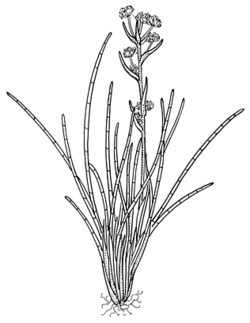
Description: Tufted or robustly erect perennial herbs with stem base surrounded by old leaves, glabrous.
Leaves conspicuously transversely septate, simple or divided.
Inflorescence a terminal compound umbel and alternate, subopposite or whorled lateral compound umbels. Flowers bisexual or unisexual and the plants dioecious or polygamous; creamy white or pinkish. Female inflorescence usually more robust than male. Bracts usually shorter than the compound umbels, the lowermost leaf-like, the uppermost reduced. Sepals very small. Petals obovate, the apex slightly inflexed. Ovary and style rudimentary in male flowers, the stamens reduced and sterile in the female. Stylopodium prominent and conical in female and bisexual flowers.
Fruit dorsally compressed, ovoid to oblong-elliptic; carpophore bipartite; mericarps with 4 or 5 narrowly winged ribs, often unequally developed.
Distribution and occurrence: World: c. 40 species, Australia, New Zealand, Antarctic Is. Australia: 3 species (endemic), N.S.W., Vic., Tas.
Text by J. M. Powell, except for genera with authors listed
Taxon concept:
| | Key to the species | |
| 1 | Leaves simple, linear to narrow-oblanceolate, the apex obtuse, lacking an aristate tip; the basal sheath 1–2 mm wide | Aciphylla simplicifolia |
| Leaves 2–3-pinnate, fan-like, the lamina ovate or elliptic, the segments linear with acute apex and an aristate tip; the basal sheath 10–20 mm wide | Aciphylla glacialis |
|


